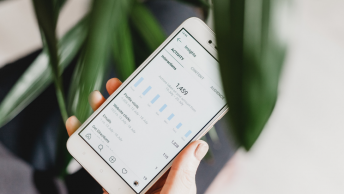Big data is a catch phrase that’s widely used but often misunderstood. I speak with small business owners and marketers who believe big data is a high level tool used by multinational corporations.
Boy are they wrong.
Big data has a tremendous use for small businesses. In particular, big data can be used to improve an organization’s social media marketing.
Here’s how to use big data to improve your social media marketing:
Step One:
The first step is to understand how data is structured and how you can use it for actionable insights.
There are two data types to consider: (1) your structured data, and (2) your unstructured data.
- Structured data fits nicely in your database. It’s the data that is easily linked to one another such as a consumer’s first name, email, and mailing address.
- Unstructured data is the exact opposite. It’s data that is not easily linked to each other such as social media chatter.
Now here’s the tricky part.
To increase your data insights, you must attempt to connect the structured data with the unstructured data. Meaning, you must connect your pre-existing consumer data with your consumer’s social media chatter.
You can use online listening and social media management tools to collect unstructured data. Tools such as Salesforce, Ubervu, and Sprout can help.
Step Two:
The second step is to develop a strategy to leverage the data. Naturally, this strategy should align with your marketing objectives to be effective.
For instance, if you want to increase conversion, you can utilize this data strategy to do exactly that.
Your data strategy formula may look something like this:
When creating a sentiment score, use your discretion when assigning a value to each consumer.
You know your industry and audience best.
Create profiles of consumers that include both data types and use these profiles as benchmarks when developing future consumer sentiment scores.
Step Three:
Once you have made both your structured and unstructured data work together, you can create a sentiment score to guide your highly targeted marketing communications.
You can assign a sentiment score to all of your prospects and align a content marketing strategy for each score range.
For instance, consumers with lower sentiment scores can receive more personalized communications and those with higher scores can receive communication to reinforce the brand position.
Step Four:
Based on your new found data insights, begin execution. Use the content that resonates best with your potential consumers.
If your data shows that potential consumers are asking questions or making comments about your marketing campaigns, you need to create content that fills that gap.
For example, if your consumers have a low sentiment about your purchase process, create an infographic that shows the various steps to purchase.
Overall, once you have obtained new data insights, you can:
- Create content to alleviate consumer challenges.
- Directly communicate with potential consumers with highly relevant information.
- Adjust your overall marketing communications based on this insight.
Conclusion
I love this analogy as it conveys how an organization is positioned if it doesn’t utilize big data.
No matter what industry you’re in, your consumers are online and the majority of their interactions with your organization are digital.
To enhance your data insight, you must infuse data collection within every phase of your marketing funnel and augment with pre-existing data to gain actionable insight.
As the quote states, you must open your eyes and look at the data your consumers are generating and listen to what they are saying.
Ultimately, this insight will help you better understand your consumers so that you can create content to meet their needs.
How have you used data for your social campaigns? Have you tried predictive analytics? What were the outcomes?
Photo Source: iStockPhoto











